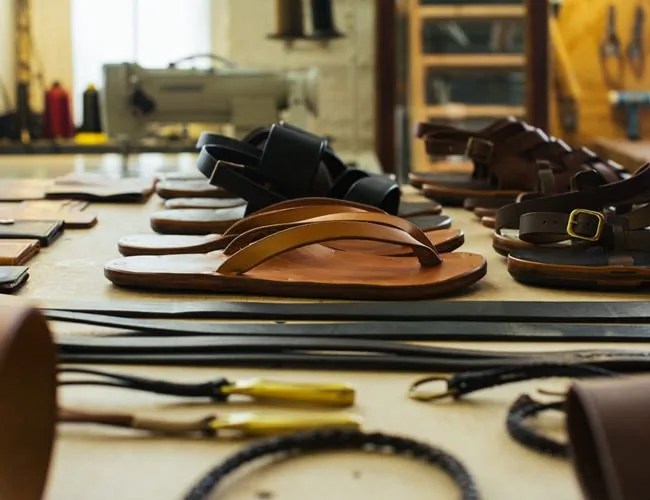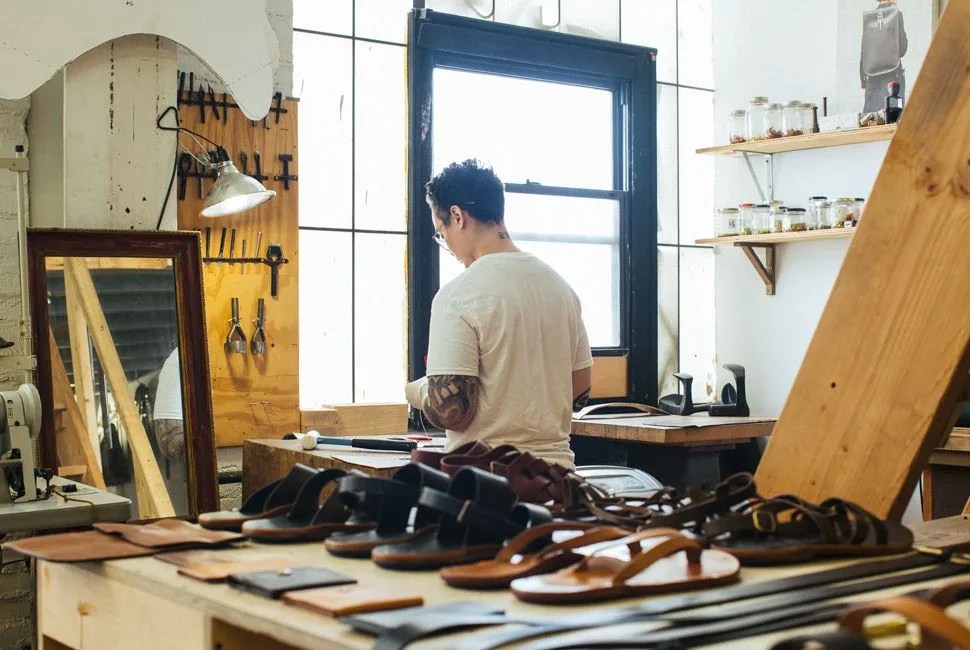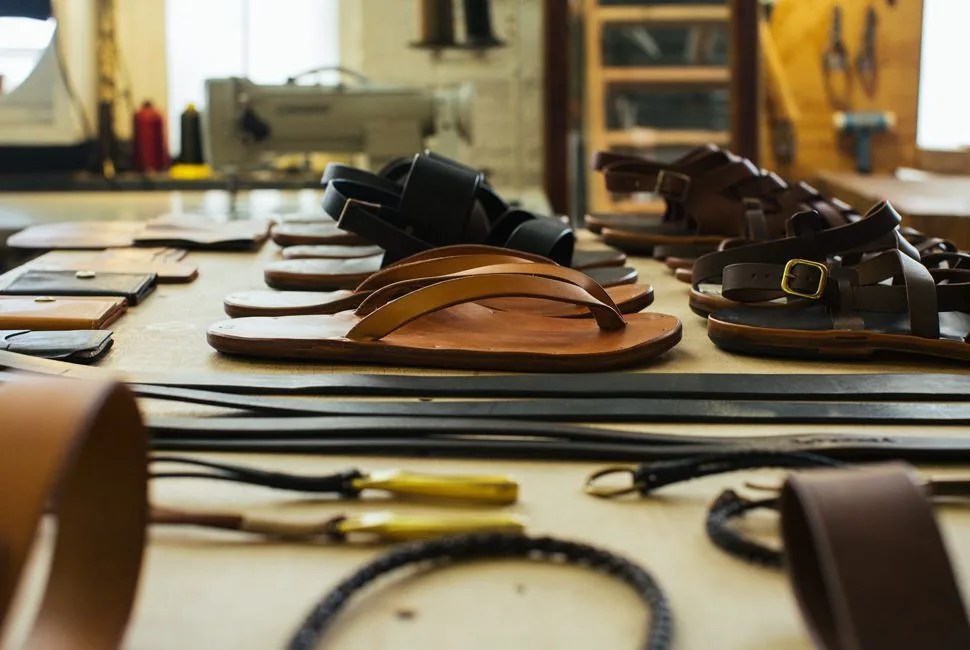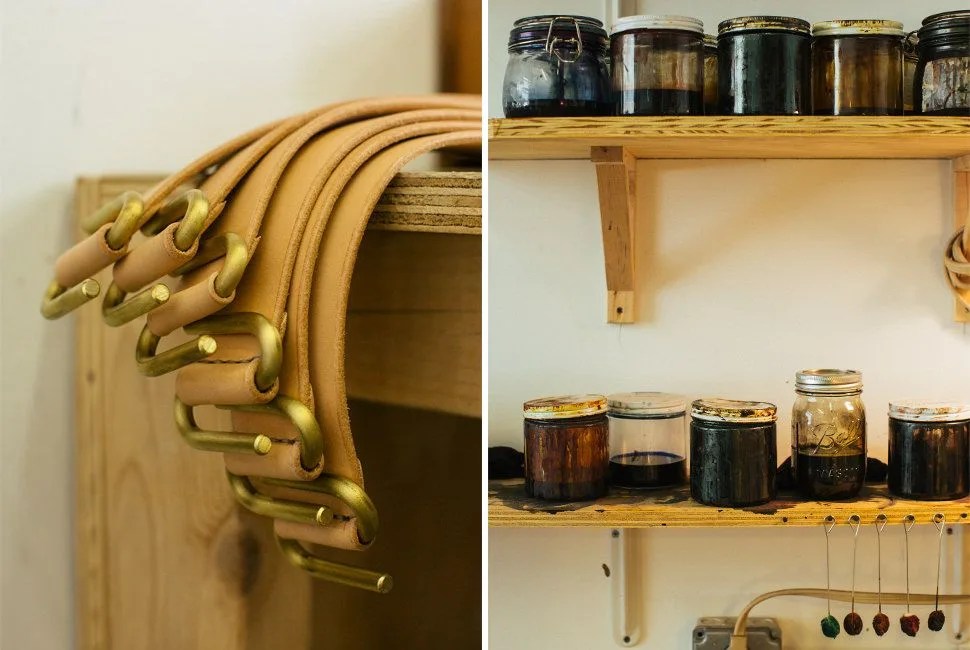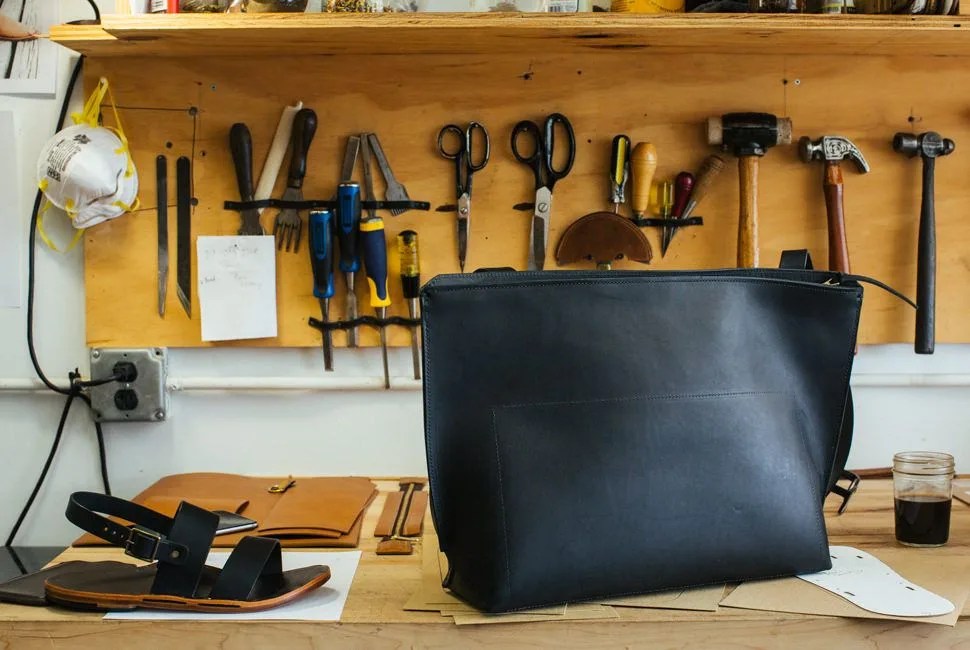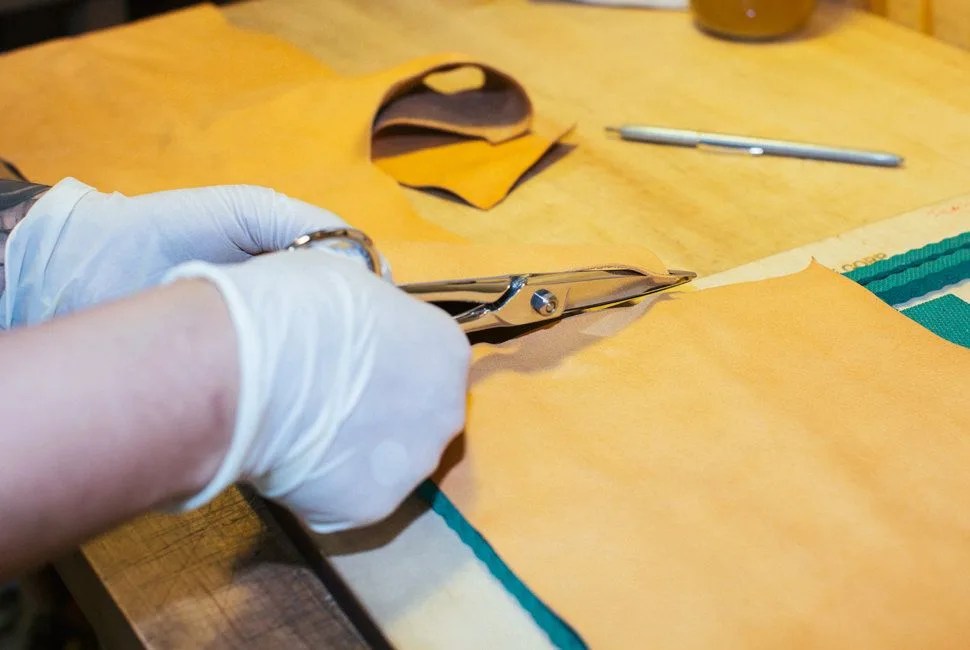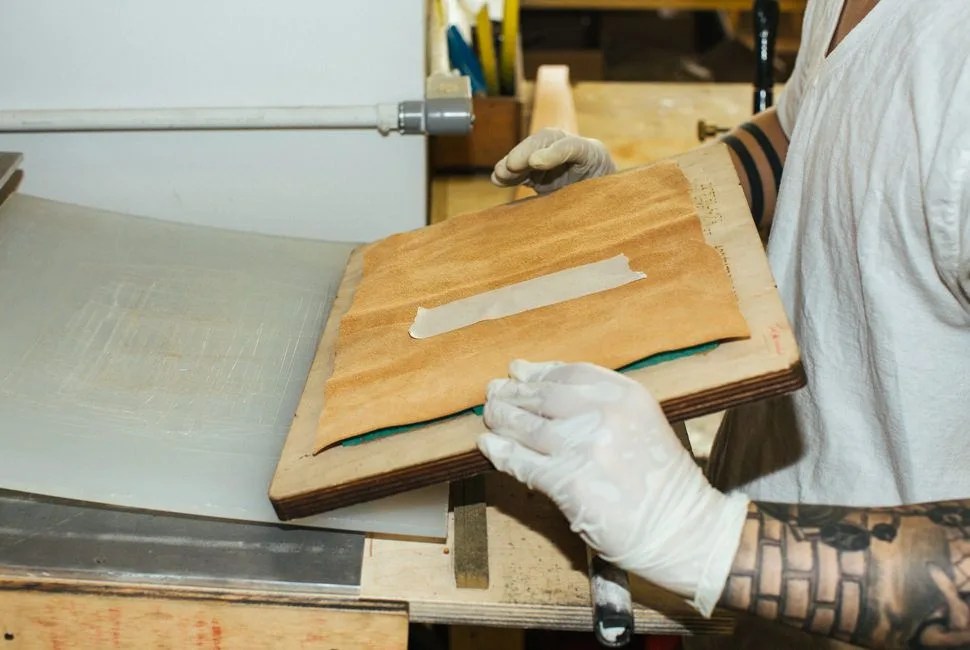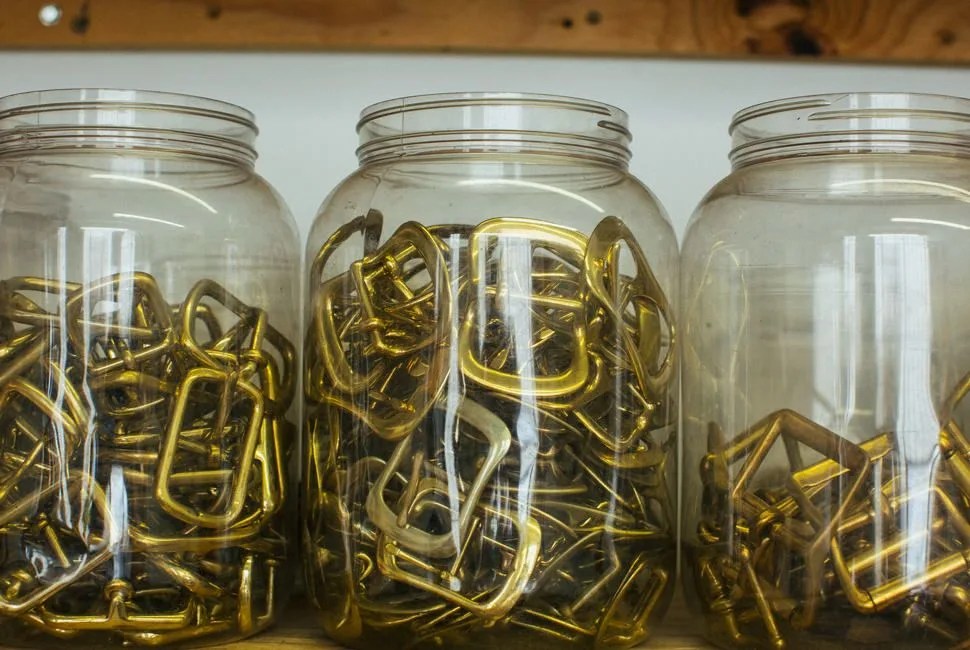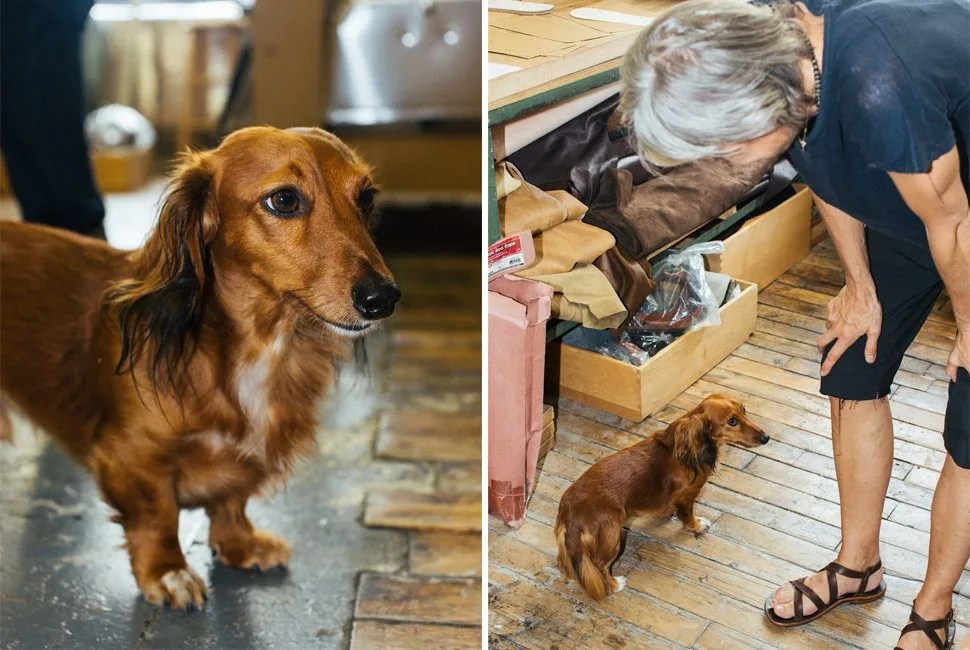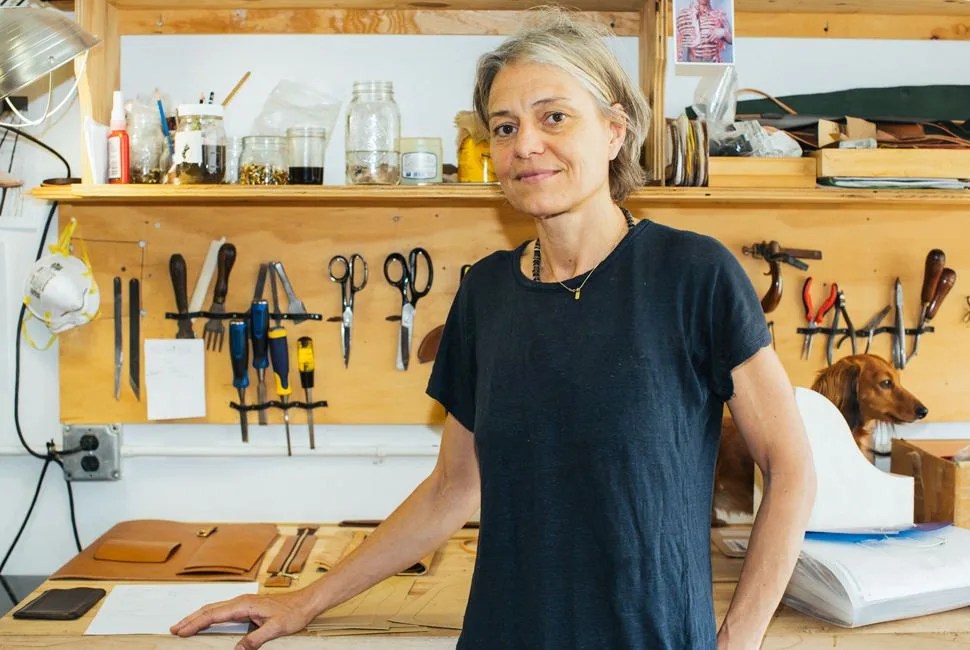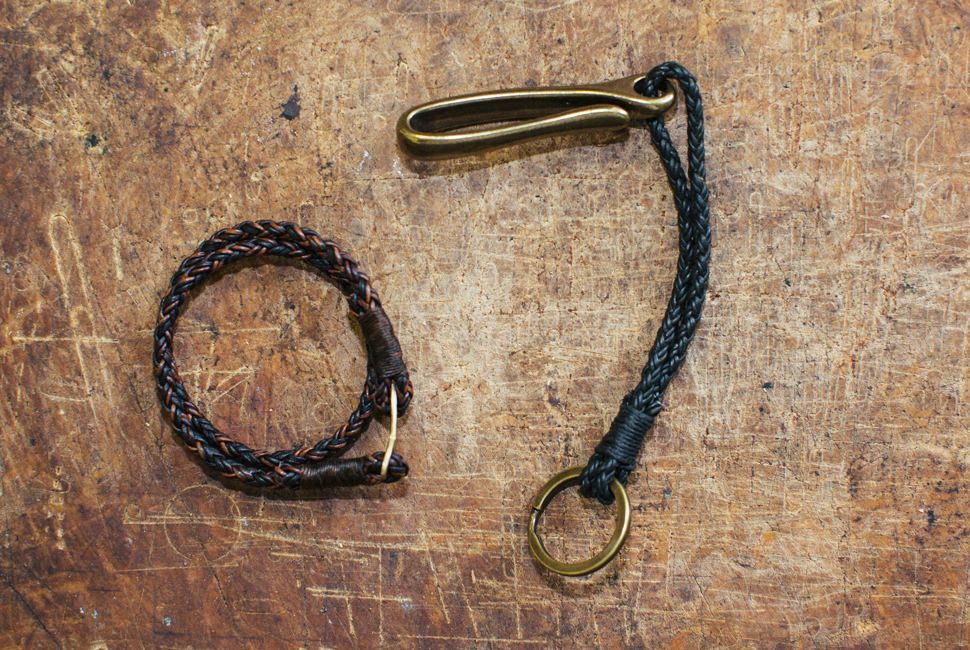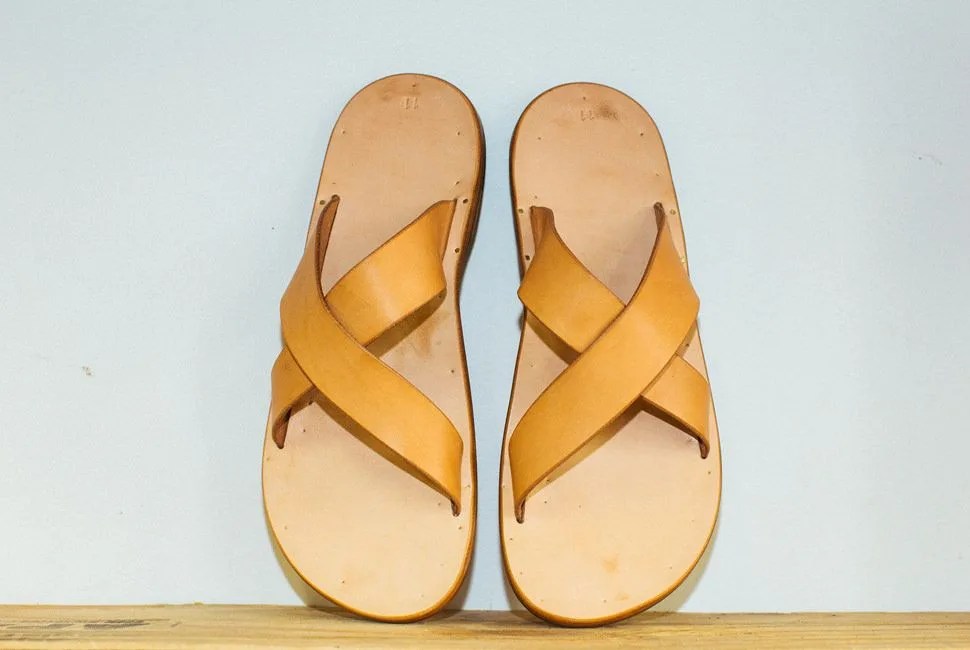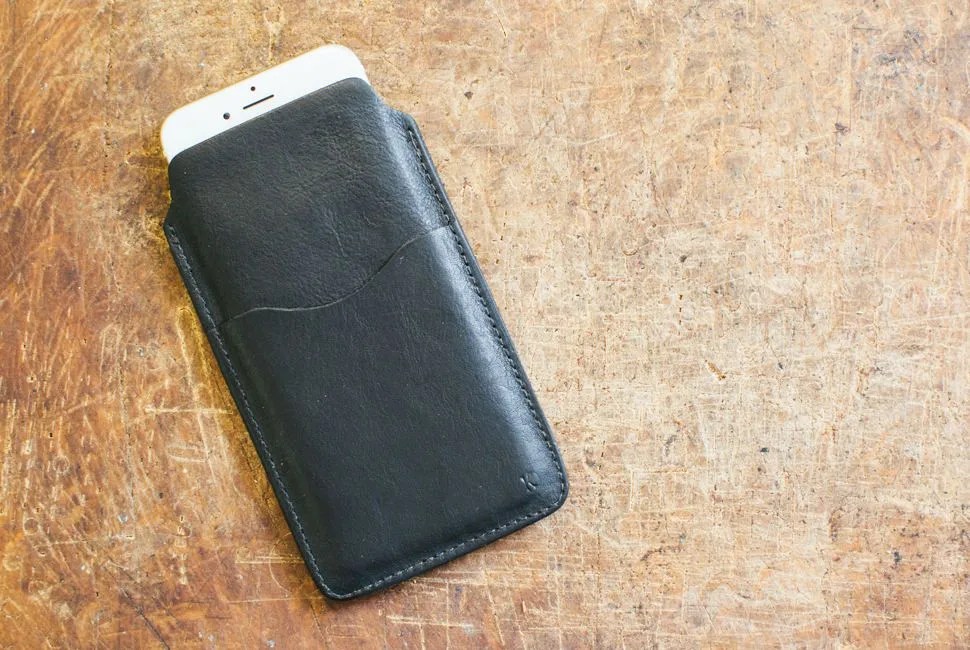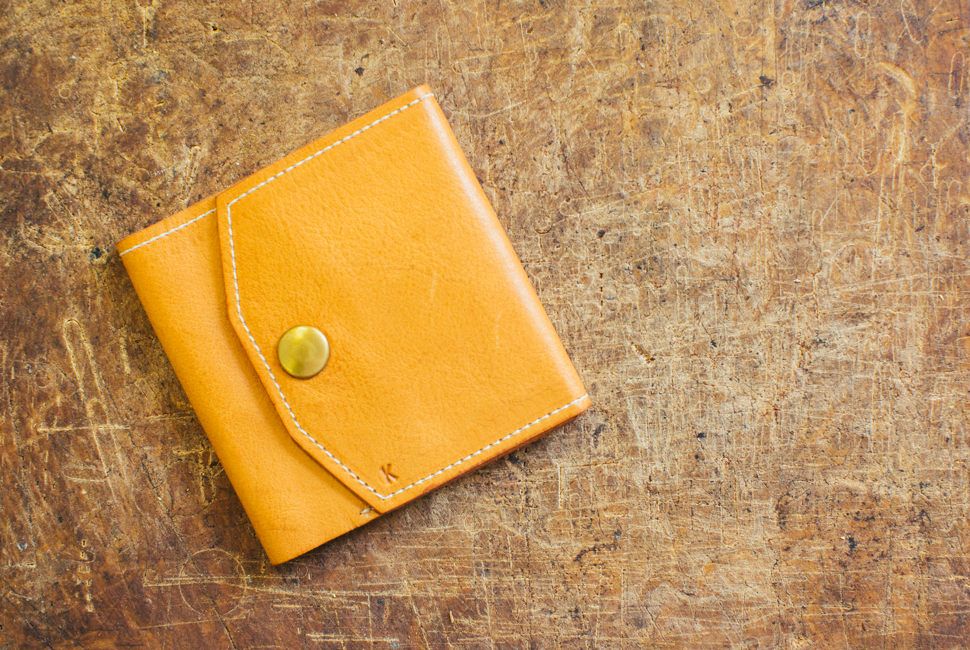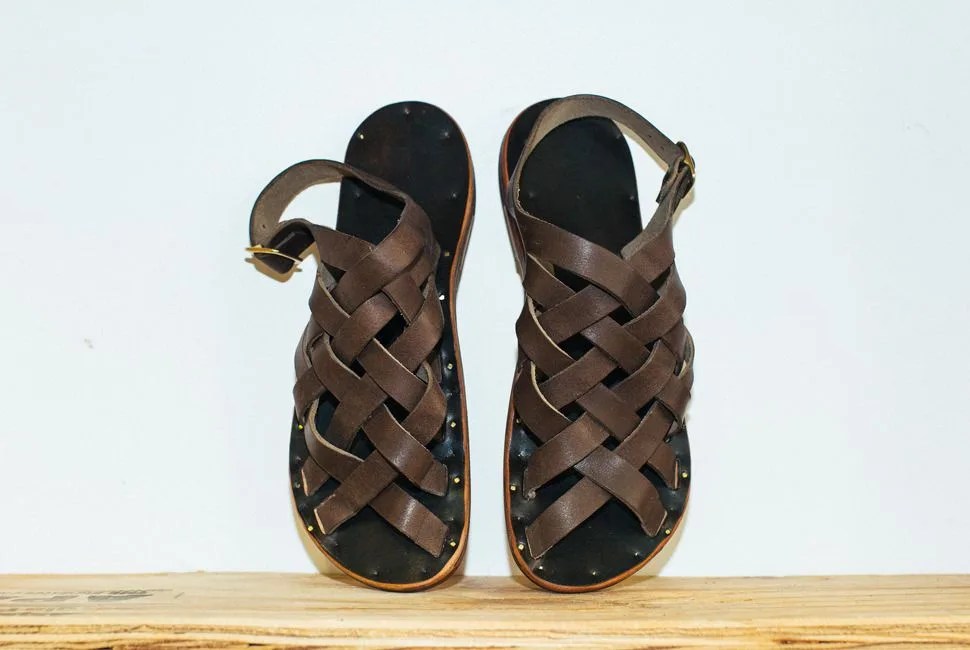15 photos
“In Holland, where I’m from, it’s too cold to even wear sandals,” said Kika Vliegenthart, founder of luxury leather goods brand KikaNY. Vliegenthart’s namesake brand, founded in Brooklyn in 2009, has garnered an international cult following for its sandals. To complement the offering of footwear, KikaNY also offers bags, belts and small leather goods — all crafted in a Brooklyn Navy Yard workshop. Vliegenthart’s designs are rooted in heritage construction techniques, minimalist designs and robust materials. “We just try to show as much of the leather itself,” Vliegenthart added.
The daughter of two art historians, Vliegenthart was raised in the Netherlands and studied economics and fine art in school. She left Europe for New York in 1993 with a scholarship to the New School, where she studied film for the next two years. Though her schooling would lead to a career as a documentary filmmaker, during which she hosted a show on Dutch public TV called “KikaNY,” it also led to her first encounter with Barbara Shaum, a legendary sandal maker in the East Village.
“I walked down 3rd street in the East Village going home, and I saw this woman making sandals,” Vliegenthart said. “So, I walked in and asked her if I could work for her between film school stuff.” Though Shaum was at first apprehensive, Vliegenthart’s interest and persistence landed her an apprenticeship in the small workshop. “So this friendship — almost a grandmother-grandchild idea — started, and I just interned with her for 15 years, on-and-off. We did little things like card cases, or maybe a wallet for somebody, but it was mainly just sandals, sandals, sandals — all kinds of people, all custom. We’d trace people’s feet in the store.”
“It was mainly just sandals, sandals, sandals — all kinds of people, all custom. We’d trace people’s feet in the store.”
Though Shaum did limited runs for Donna Karen, Ralph Lauren and Calvin Klein, the majority of her work was custom orders, and it was this craft that she passed to Vliegenthart. “Nothing is new,” Vliegenthart said of the process. “Barbara taught me how to do it; they’re ancient designs. She was taught in Provincetown, and those guys were taught in France.” KikaNY’s range of sandals have molded arches and cobbled footbeds, the seams are sealed from the elements and the curved straps that adorn the arched base seem almost architectural. “There is a logic behind it,” Vliegenthart said of the crossing strips of leather. “There are seven points that hold your foot down to your footbed, and you have to hit at least three of them. If you don’t, it doesn’t hold your foot at all, and you can’t walk.”
Vliegenthart, aiming to reach a wider audience, decided to do a 50/50 mixture of custom orders and wholesale orders. When scaling her production for retailers, she encountered an interesting problem. “I started researching lasts for sandals, but they didn’t exist anymore.” After an in-depth search, Vliegenthart found a set of very old Mexican shoe lasts, which she altered with a notch for the big toe. All of KikaNY’s sandals are hand-finished in a three-step process that is rare in the leather industry: the edges are sanded and beveled, a homemade sealant (passed down from Shaum) is applied to the rounded edge, and a wax mixture is added on top of that (and buffed to a shine).
